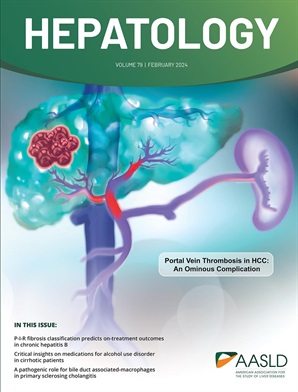血清淀粉样蛋白a1诱导的肝内调节性T细胞功能障碍驱动自身免疫性肝炎进展
IF 12.9
1区 医学
Q1 GASTROENTEROLOGY & HEPATOLOGY
引用次数: 0
摘要
背景,目的:自身免疫性肝炎(AIH)的治疗仍然具有挑战性,主要依赖于皮质类固醇治疗。调节性T细胞(Tregs)对维持免疫稳态和预防各种自身免疫性疾病至关重要,是AIH的潜在治疗靶点。然而,Tregs在AIH发病机制中的作用尚不清楚。的方法,结果:用细胞色素P450 2D6 (CYP2D6)质粒水动力转染小鼠肝脏,建立AIH模型,发现Tregs数量随着疾病进展而增加。尽管肝脏Treg的存在增加了,但效应T细胞的比例也增加了,这有助于疾病的进展。FoxP3-DTR/eGFP小鼠的全身Treg消耗加剧了AIH的进展,而过继性Treg转移未能减轻肝脏炎症和纤维化,突出了肝内Treg功能障碍。使用10x Genomics平台对肝脏treg进行单细胞RNA测序,发现抑制功能受损并向促炎表型转变,与外周treg的抑制能力增强形成对比。这种肝内Treg功能障碍与肝血清淀粉样蛋白A1 (SAA1)水平升高有关,SAA1通过toll样受体2 (TLR2)损害Treg。肝脏特异性aav8介导的shSAA1治疗可恢复Treg功能并改善AIH症状,而缺乏TLR2的Treg过继性转移可显著改善疾病结局。结论:肝内Tregs表现出抑制表型减弱和效应表型增强,无法控制AIH中不断升级的炎症。AIH治疗不仅应注重增加Treg数量,还应注重恢复Treg的功能。本文章由计算机程序翻译,如有差异,请以英文原文为准。
Serum amyloid A1-Induced intrahepatic regulatory T cell dysfunction drives autoimmune hepatitis progression
Background & Aims: Treatment of autoimmune hepatitis (AIH) remains challenging and primarily relies on corticosteroid therapy. Regulatory T cells (Tregs), essential for maintaining immune homeostasis and preventing various autoimmune diseases, present a potential therapeutic target for AIH. However, the role of Tregs in AIH pathogenesis remains unclear. Approach & Results: In a well-established AIH model induced by hydrodynamic transfection of cytochrome P450 2D6 (CYP2D6) plasmid into mouse liver, Tregs were found to increase in number as the disease progressed. Despite the increased hepatic Treg presence, the proportions of effector T cells also rose, contributing to disease progression. Systemic Treg depletion using FoxP3-DTR/eGFP mice exacerbated AIH progression, while adoptive Treg transfer failed to alleviate liver inflammation and fibrosis, highlighting intrahepatic Treg dysfunction. Single-cell RNA sequencing of hepatic Tregs using the 10× Genomics platform identified impaired suppressive function and a shift toward pro-inflammatory phenotypes, contrasting with enhanced suppressive capacity observed in peripheral Tregs. This intrahepatic Treg dysfunction was associated with elevated hepatic serum amyloid A1 (SAA1) levels, which impaired Tregs via toll-like receptor 2 (TLR2). Liver-specific AAV8-mediated shSAA1 therapy restored Treg function and ameliorated AIH symptoms, while adoptive transfer of Tregs lacking TLR2 significantly improved disease outcomes. Conclusions: Intrahepatic Tregs exhibit a diminished suppressive phenotype and an enhanced effector phenotype, failing to control the escalating inflammation in AIH. AIH treatment should not only focus on increasing Treg number but also on restoring their functional capacity.
求助全文
通过发布文献求助,成功后即可免费获取论文全文。
去求助
来源期刊

Hepatology
医学-胃肠肝病学
CiteScore
27.50
自引率
3.70%
发文量
609
审稿时长
1 months
期刊介绍:
HEPATOLOGY is recognized as the leading publication in the field of liver disease. It features original, peer-reviewed articles covering various aspects of liver structure, function, and disease. The journal's distinguished Editorial Board carefully selects the best articles each month, focusing on topics including immunology, chronic hepatitis, viral hepatitis, cirrhosis, genetic and metabolic liver diseases, liver cancer, and drug metabolism.
 求助内容:
求助内容: 应助结果提醒方式:
应助结果提醒方式:


